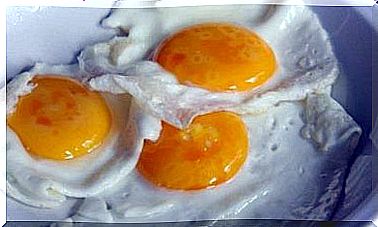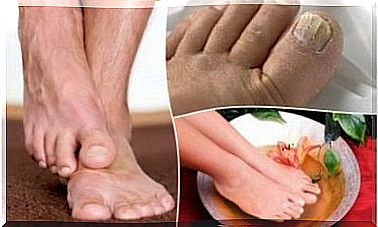How Do You Identify A Pampered Child?

You’ve certainly encountered a pampered child sometimes screaming and kicking in the middle of a supermarket, hitting other kids, or disrespecting their parents. Identifying a pampered child is easy from the outside, as the behavior of such a child is attention-grabbing and distracting.
However, it is not easy to accept that your own child is committing such behavior. A pampered child is not just a challenge for parents and teachers. He actually causes the most harm to himself with his attitude.
A pampered child usually ends up being rejected by others and drifts into ongoing conflicts. She also doesn’t have many of the necessary interpersonal skills when she comes into adulthood. Therefore, it is important to detect such behavior and correct it as soon as possible.
What makes a child pampered?
A pampered child is not born as such. Her behavior is due to insufficient parenting at home. Keep reading and we’ll tell you what kind of mistakes you might have made if your child is behaving badly.
Insufficient boundaries
A child needs boundaries to grow in a mentally and psychologically healthy way. Simple requirements like “don’t eat treats before dinner” or “collect toys after playing” will help guide your child and make him or her feel safer.
Keep in mind that these boundaries must be clear, coherent and consistent. So don’t give up just to prevent your child from crying or to avoid conflict. That way, you weaken your own authority and give confusing signals.

Overprotection can make a child pampered
It is understandable that parents want to make life easier for the child. However, this often means that parents often deprive the child of the opportunity to learn to tolerate and deal with frustration. The child should have responsibilities appropriate to his or her age and should learn the consequences of his or her actions.
So it is advisable to help the child, but do not do everything for him. It makes a child believe that he has only rights, but no obligations at all.
Authoritarianism
However, the opposite is also not appropriate. You cannot identify with a child just by constantly giving orders or shouting and threatening him.
The child needs love, respect, listening and consideration. Otherwise, the bond weakens and rebellion as well as behavioral problems only increase.
Bad examples
Have you ever stopped to think about how you talk to a child? Do you have a habit of raising your voice, drifting into a struggle for dominance and saying “no” to everything?
So it’s no surprise that a child repeats and mimics the behavior of you and other adults around you. Remember that you are the child’s most important role model.
Identifying a pampered child
As we mentioned earlier, it is not easy to admit a child is being pampered. So watch out for the following signs if you are considering this possibility.
1. Regular tantrums reveal a pampered child
Teasing is common at the age of 2-4 years. However, if the teasing continues after this, it is often a sign of a pampered child.
Outbursts of anger at an older age are no longer due to an inability to express emotions, but are used to manipulate adults as well as to get through their own will.
2. Excessive agitation
A pampered child does not appreciate what he or she has and is never satisfied. Is your child immediately bored with toys and wants new ones? Did he ask for his favorite food for dinner and now he wants to eat something else?
It is important to find out what exactly happens when a child wants everything right away and does not accept a negative answer.
3. Lack of courtesy is a sign of a pampered child
Everyone needs to treat others with respect and consideration so that society can grow. This includes asking permission, giving thanks, and general courtesy to others.
A child is definitely pampered if he treats others disrespectfully or contemptuously and hurts with his comments or raises his voice.
4. Disobedience
It is common for a child not to always do the way you want the first time you ask. He tries to resist things he doesn’t want to do. A pampered child willfully ignore his parents ’orders and requests, avoiding his responsibilities.

How can you correct and deal with the use of a pampered child?
Fortunately, it is possible to correct a child’s problematic attitude. To do this, you need to analyze things you are not doing correctly and modify your parenting style:
- Set clear rules and try to follow them. Don’t give up on fatigue or pressure.
- Let the child take responsibility, and don’t do things for him that he can do for himself.
- Exchange commands and threats for respect and dialogue. Also explain the reasons for refusing requests or refusing wishes (“because I say so” is not appropriate).
- Become a positive role model and treat your child the way you would like him or her to treat others. Also, try not to raise your voice when your child is shouting, crying, or defying you.
- Strengthen the right kind of behavior, value your child’s good attitude, and spend more time with him or her doing rewarding activities for both of you.
Changes in family life take time
Parenting is a complex and demanding task, so it is normal to make mistakes. Don’t blame or punish yourself. Instead, congratulate yourself when you recognize such a situation and handle it the right way.
Changing family dynamics is not easy and the child is likely to resist change. In this way, however, you ensure a child’s better psychological development as well as a happier life.
Don’t forget this valuable goal!









